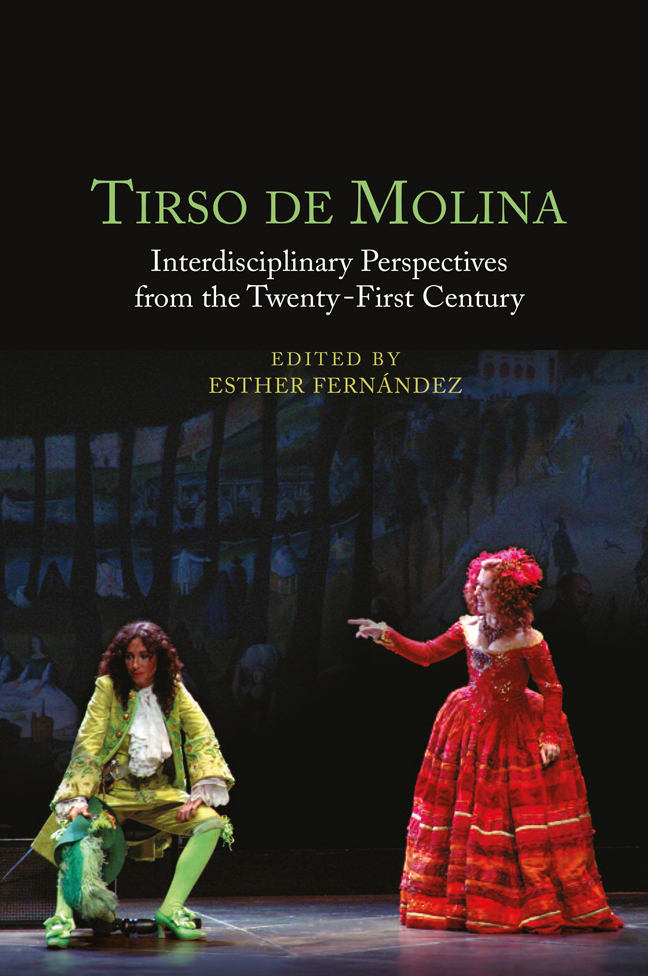8 - To Be and Not to Be: Iterations of Disguise in the Theater of Tirso de Molina
Published online by Cambridge University Press: 02 March 2024
Summary
Even a casual perusal of the works of Tirso de Molina reveals his fascination with various forms of disguise. These range from simple erasure, such as when Diego de Marsilla covers his face with a cloth in Los amantes de Teruel [The Lovers of Teruel], or misdirection, where Don Juan de Cardona changes his voice in Privar contra su gusto [The Reluctant Councilor], to much more complex structures that layer on changes of gender, nationality, and language such as we see in El amor médico [Love the Doctor]. In the latter case, disguise forms a complicated dance where language, clothing, and performance rebut or reinforce each other depending on Jerónima’s need. Tirso’s use of disguise is so ubiquitous that this theatrical technique becomes more than recourse to further the plot or add drama to the performance. It is, in fact, a thematic element. In the following pages, I will provide the reader with a sense of how Tirso makes use of disguise and an understanding of the various permutations of disguise that are common in Tirso’s theater, in the hope of illustrating how disguise plays a key role in exploring and explicating the themes of justice and identity that permeate Tirso’s theater.
At its heart, disguise is an attempt to separate oneself from one’s self, frequently in the hope of a better future. The justifications, excuses, and mechanisms may vary, but disguise permits words, actions, and thoughts that are not tolerable within the strictures of society or that are denied to the person because of their status, gender, or race, for example—strictures that Michel Foucault describes as a “normalizing gaze” (1995: 184). In this view, one that is seen again and again in Tirso’s plays, disguise, in any form, is used to break with the social roles that the characters are expected to play. Thus, disguise is a liberating escape from both social surveillance and a means to achieve a character’s goals. In Tirso, the use of disguise is generally the resort of the powerless and used to achieve a morally defensible goal or to right a moral wrong, although it is occasionally used to hide abuses as well.
Disguise, in one form or another, is used in more than fifty of Tirso’s plays.
- Type
- Chapter
- Information
- Tirso de MolinaInterdisciplinary Perspectives from the Twenty-First Century, pp. 115 - 130Publisher: Boydell & BrewerPrint publication year: 2023

